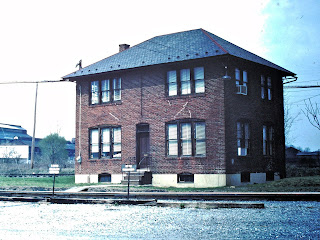There is a long way to go to meet my goal of getting a layout room ready for the layout. The original goal of having the hobby space ready in 2017 has long past, but I'm not sulking or wishing I'm done. Well, maybe just a little bit. The layout is currently in storage. I continue to work in my hobby of model railroading and other Cornwall Railroad projects. I have been hanging out at Tom Jacob's Reading Cross Line layout, and this is where I spend most of my hobby time. So with my time being spent at Tom's, the progress on my projects has diminished.
If you haven't heard about Tom Jacob's Reading Cross Line Layout, here is a link to the Facebook Group:
https://www.facebook.com/groups/2017109971860776
Look for the Laser exploits. I have given Tom the drawings of the 16th street yard office I made in 2018 of the building. He has converted the drawings so the Laser cutter can use them to burn a model of it. It is still in progress. Since, I only drew the mortar lines Tom is learning a lot about brick work and has a lot of bricks to fill in before progress can continue. If you do visit the Facebook site, look around the June time period. He is working on the goal of having the layout ready for operation, so work on this project has a long way to go also. Here is the beginning of the project on June 18.



























